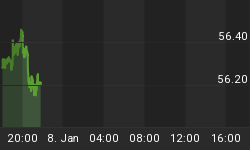Now that the dust from today's wild ride, we can take a look-see how the Euro fared. In watching the initial reaction to the actual FOMC statement itself, the Euro began to move well off its session lows. It reflected the confusion that was in the minds of traders (there was certainly a lot of that in my mind when I read the statement) who felt that it struck an extremely dovish theme at initial glance. That threw same water on the fire for those expecting a sooner rather than later shift in policy expectations for the FOMC in regards to raising interest rates.
A half hour later, the Yellen presser began and that was that. Look at that huge down candle.
I have seen a few of these things over my trading career and I can tell you that I was struck by how different the tone was in Yellen's prepared remarks (and her subsequent answers to press questions) from the tone of that FOMC statement. Judging from the action in the Euro at that point, I was not alone in that assessment.
It does seem that the ECB is preparing the markets (at least they are taking it that way) for their own version of Quantitative Easing to kick off early next year - perhaps as early next month.
That is bringing back selling back into the Euro which had recently begun moving higher reflecting disappointment that the ECB did not move on a QE this month.
In looking at the chart, one can see that the Euro has been trading below the 50 day moving average for the last half of this year. With crude oil sending convulsions into the Yen carry trade and Forex markets, the unwinding of that trade briefly kicked the Euro above the 50 day moving average yesterday. It did not close above that average however and today, in one fell swoop, it erased 5 days' worth of gains and then some.
Notice also that the RSI reading has not even managed to make it back to the 60 level on any rallies since July. As a matter of fact, the RSI has not been above 70 all year. Translation - this remains a market that is inherently weak.
Let me leave you on this one with a weekly view of the currency.
You can see that the currency has held the first support level shown on the chart near the 1.2250 region. The market looks like it is undergoing more of a consolidation phase than it is the start of any trending move higher. Note the tall shadows on the candles indicating the presence of active sellers on the rallies up. All of the indicators remain in a bearish mode.
Essentially, we are going to be trading interest rate differentials in the Euro and the Dollar, now that the Fed has weighed in with the Yellen statements in her press conference. With the Eurozone seemingly on track to try pushing rates LOWER and the Fed seemingly on track to move rates HIGHER, it is difficult to make a fundamental case for buying the Euro versus the Dollar.
That means the path of least resistance remains lower until proven otherwise. The -DMI remains well above +DMI on the ADX indicator shown below the price chart noting that the bears are in firm control of this market on the intermediate time frame.
We'll continue to track this currency on its chart and see how it might handle another downside test of last week's low. If that fails it seems more probable than not that the Euro could test 1.2000, a very key level if the July 2012 low were to fail. Remember we were still dealing with the European Sovereign Debt crisis at that time. Some were predicting the demise of the actual currency itself back then. Anytime therefore, that we get down towards levels in the 1.200 zone, we are talking some major levels of chart support. If those were to go for any reason, the Dollar is going to soar.





















